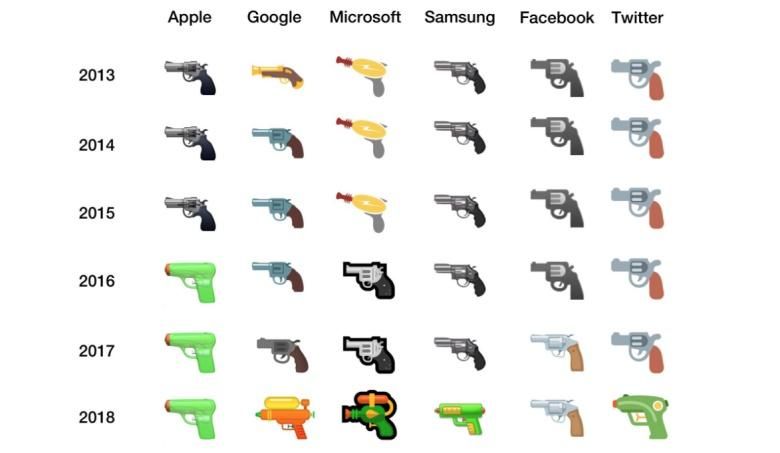Initially used exclusively by Japanese mobile operators in the late 1990s and early 2000s, emojis became such a global phenomenon in recent years that they generated quite a few controversies with their depiction of skin color, gender-neutral characters and even the correct way to stack a burger.
Inevitably, as these fun ideograms continue to expand and evolve, replacing actual words and traditionally written messages for many, you’ll find symbols that can be easily misconstrued in pretty dangerous ways.
Portrayed on every major platform to closely resemble its real-life counterpart several years ago, the inherently contentious gun emoji went through a radical change on Apple’s devices back in 2016.
After a period of hesitation, Samsung, Twitter, Google and finally Microsoft decided to follow suit, replacing their own pistol emojis with harmless-looking squirt gun illustrations. The revised emoji is not yet available on Windows, although Microsoft offered a preview on one of its official social media channels earlier today, stating the company is “in the process of evolving” its emojis to reflect its “values and the feedback we’ve received.”
We are in the process of evolving our emojis to reflect our values and the feedback we’ve received. Here’s a preview: pic.twitter.com/BlB3yYTSht
— Microsoft (@Microsoft) April 25, 2018
The water pistol has reportedly begun to roll out to Android devices around the world, while Facebook plans to implement a similar change across its social networking and messaging products in the near future.
It’s obvious the cross-platform redesign was rushed by the companies’ desire to maintain compatibility with one another so that no confusion is generated when, say, a Galaxy user sends a Pixel owner a water pistol emoji that the latter receives as a depiction of an actual gun. Also, these changes may have a little something to do with the intense firearms regulation debate currently tearing the US apart.

